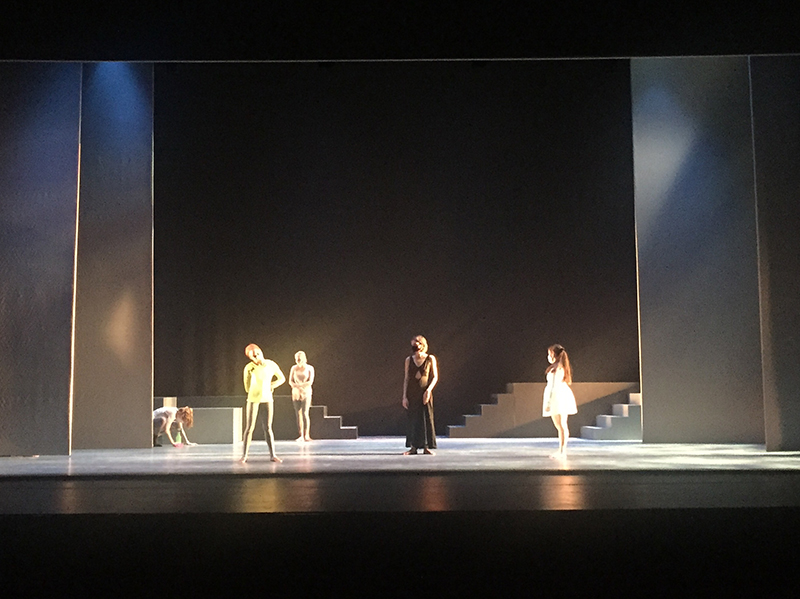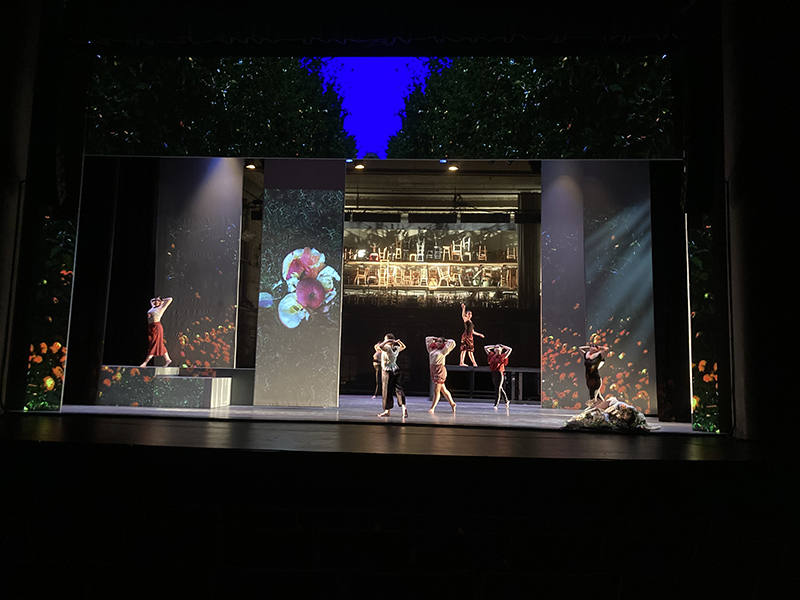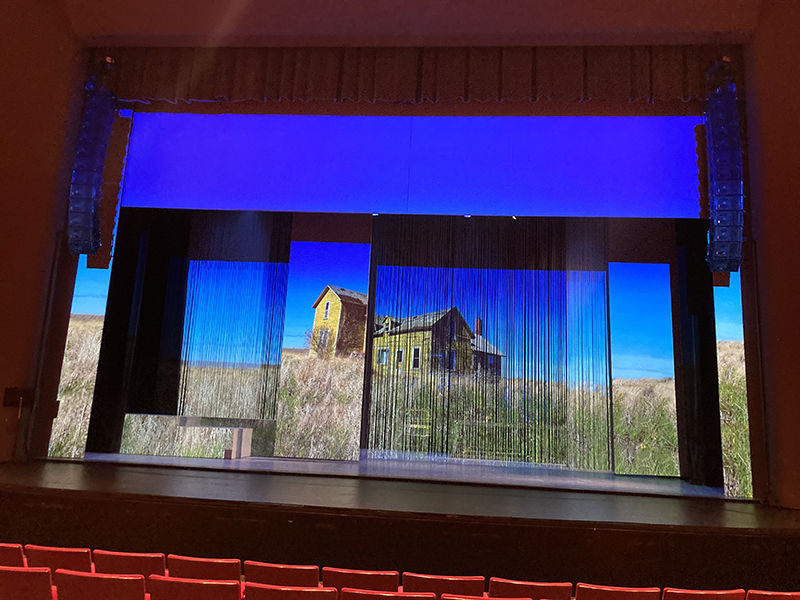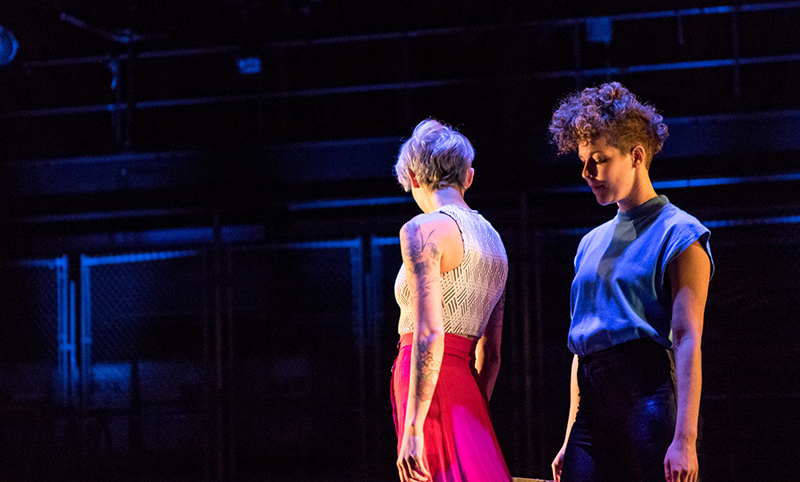If there was ever a time when we needed to be buoyed by the passion and innovation of artists, that time is now. And who better to answer that call than the faculty and students of Dance at Illinois, whose annual November Dance series is returning this weekend, in a ground breaking, COVID-safe production. Anxious to learn more about what November Dance 2020 would look and feel like, I reached out to Jan Erkert, Dance at Illinois Department Head and November Dance Concert Director. Her galvanizing words remind us that artists continue to meet the moment, even at its most challenging. And their work, like Erkert’s words, offers us a framework for finding hope and moving forward in challenging times.
Smile Politely: Congratulations on this exciting new incarnation of November Dance. The faculty and students must be so excited for the return of this milestone event, even if it looks a bit different now. How has everyone been faring this semester? What has the rehearsal process looked like?
Jan Erkert: Despite multiple pandemics colliding, and the numerous obstacles in our way….we are moving forward because it’s in our blood. These extreme limitations have been frustrating and exhausting, but have also filled us with gratitude, knowing that the practice of being in the body, and listening and creating from its vast resources is simply put…. precious. Negotiating rehearsals both live and on Zoom, mask wearing, the lack of touch, and social distancing is no easy task for any choreographer or dancer, but our community has persevered and made compelling new works that are in conversation with all that is swirling around us.
SP: What can you tell us about the decision to live-stream rather than record and broadcast?
Erkert: Dance, at its very essence, is like a tapestry woven from live, present energy. As an audience member, being present at this spontaneous moment creates an experience. How could we not try? The Krannert Center invested in streaming equipment, not only for this moment, but the future as well. Now and when the pandemic is over, streaming is an opportunity to offer our programming to our student’s mom, dad and aunt Latosha living 3,000 miles away. November Dance will be our first concert streamed, so we have our finger crossed as we negotiate all the technology challenges to bring you live from Krannert stages.
Streaming also dictated a different way to deliver the concert. Instead of a typical dance concert with four dances – in this concert series, each of the four pieces will be live streamed twice, at 7 p.m. and 9 p.m., over four consecutive nights. The audience will see a twenty minute piece followed by a conversation by the artists. This will allow audiences to have a rich engagement not only with the work, but also with the artists and designers. In addition, there will be a live audience made up of under fifty University of students and faculty, that will energize the performers. Unfortunately, this concert is not open to the larger public, due to testing and safety concerns.

From Sara Hook’s work “Cedar Closet”
SP: For this audience member, November Dance has always been a chance to engage in conversations between dance’s past, present, and future. The current program seems to speak directly to the challenges of the moment. What can you tell us about it? And as Concert Director, what was your process in curating the work and envisioning the larger message?
Erkert: Curation of this concert began over a year ago, so the concert was to include master works by Dr. Kariamu Welsh, founder of Umfundalai, a contemporary African dance technique and other guest artists. As the quarantine hit, we decided to focus on the creation of new works, made during, for and from this moment. We are making work at a time when the wounds of racism are bleeding profusely, fires and floods remind us of the cataclysmic nature of climate change, people are dying from an attack of a micro-organism and many have lost their jobs….all while the election looms. Dance, as an embodied form, is always working in the present. Our bodies absorb the tensions, expansions, limitations, frustrations, boundedness and boundlessness of the times.The past is also present in this concert. Professor Endalyn Taylor began the work on her piece in November Dance prior to the pandemic. At that time she labeled it “Boxed In,” perhaps a premonition to what was to come. Her work “Boxed,” asks us reflect and reconsider our perceptions of not only ourselves, but the identities we form in relationship to our race, gender, age, ability and country. Due to Zoom based rehearsal constraints, Professor Sara Hook asked each dancer to learn one of her many solos she created throughout her career. Each dancer was asked to learn the solo from a video— not an easy task. Her work, “Cedar Closet,” has been wrested together from remnants of old dances that now collide and catalyze into a fresh archive of this present moment. Storytelling through Netflix and Instagram has been a source of great pleasure to many as we weather the pandemic. Graduate students, Kayt MacMaster and Sarah Mininsohn, are collaborating on a piece that evokes mythic folklore; drawing on an eclectic mix of imagery from cowgirls, herding, and minotaurs to teacups and nests. Graduate student and choreographer Bevara Anderson, will offer a meditation of quietude, a welcome gift for this unsettled world. This dance will be performed by our first year students, a new Dance at Illinois tradition, which will enable our audiences to get to know our initiates from their first performance to their last senior concert.

Projection Design by John Boesche (Theatre faculty), Set Design by José Manuel Díaz-Soto ( Theatre faculty)) and Jia “Leo” Zengpeng (Third year MFA graduate student in Scenic Design).
SP: I’ve read that these dances were created for the camera. Can you tell us more about that?
Erkert: None of the dances in November Dance were designed to be Screen Dances (dances specifically made for the camera). However, we began the semester with the uncertainty of knowing that at any moment we might have to move from the live rehearsal studio to Zoom. So, all rehearsals have been steadily archived, in case of that likelihood. Because the process has been so thoroughly archived, there remains the possibility of many more projects evolving out of these works — a documentary, are —working of the dance into a screendance, or a re-shuffling of the dance in new ways. Stay tuned.
SP: While it is easy to focus on what dance, and more broadly the performing arts, have lost during COVID times, there has also been an opportunity for change, for creative solutions and for innovation. Has there been an upside to working in this new world? Artists are so often the first to meet the challenges of our times.
Erkert: Due to the tragic cancellation of performances at the Krannert Center, we had unprecedented access to the Krannert stages, which provided an unexpected opportunity. What if we “flipped the script” and asked our extraordinary team of KCPA set designers to build something that provided a COVID-safe environment to dance? The lighting, costume and sound designers joined in and set the stage for how the dances were to be made. That is not how it usually happens. Even though each of the choreographers are responding to the same set, each artist has made a very different dance in response. This has ruptured the normal collaborative relationships, which has been both unsettling and exciting. Because this concert will be streamed onto the internet we also had to be careful about royalties, so we emphasized collaborations with local sound designers and composers to create totally original sound scores specifically for these dances.

Projection Design by John Boesche (Theatre faculty), Set Design by José Manuel Díaz-Soto ( Theatre faculty)) and Jia “Leo” Zengpeng (Third year MFA graduate student in Scenic Design).
SP:What has the impact of this new format meant for all of the talented people backstage (i.e., lighting, costume, and sound designers)?
Erkert: The Theater Design faculty and students have been negotiating every aspect of how they operate with creativity, ingenuity and fluidity. Everything has to be re-thought….How do set designers and crew load a set onto the stage with social distancing? How does a costume designer “fit” a costume and stay safe. How many ways are there to create a mask that doesn’t look like a mask? At this writing we are about to go into tech week, so we will see how many more things we have to reinvent.
SP: The live-streamed performances are being made available for free (with a request for donations). This seems really significant to me, in terms making the event more financially accessible at a time when we need art the most. What can you tell us about this decision?
Erkert: Theatre, Dance and Music have had many conversations about this issue. On the one hand, it is important that audiences support the cost of the arts during a time when the vast eco-system of artmaking has been tragically cut and silenced. But, ultimately we decided on offering a free concertbecause so many people, including artists, designers, alumni, students and families of our students are suffering economic hardships. We want to welcome people to a concert celebrating our humanity through dance during these dark times. We hope that folks who can, will give generously to the department, which will support alumni projects and residencies in the coming years.
SP: As the steward of Dance at Illinois, how have you been guiding faculty and students through these challenging times? What advice do you give?
Erkert: Fluidity, adaptability and have always been at the core of art-making. Don’t have any money? Bang on a can. Can’t afford a costume? Paint your body. Making art is generative because the process demands attending to life’s most important lessons. Each of the pandemics we face invites us to let go of rigidities, biases and assumptions, and change, adapt and activate toward new possibilities. This allows us to transcend mere survival and reach toward a better future.
SP: November Dance 2020, with its easy access, may help attract new audience members. What would you most like them to know about the program, about the significant role of dance at this moment?
Erkert: Dance is an art form rooted in the body, which carries the stories of our ancestors and the emotional tone of the present moment. At catastrophic moments, words fail us. The body absorbs experiences, and it never lies. Perhaps we can think of these dances made at this moment as an exquisite recording of our collective moment.
SP: Is there anything else you’d like to share with our readers?
Erkert: A huge shout out to Terri Ciofolo and the stage management and design team in the Theater Department for their spirited work to make this concert happen. Deep appreciations to Mike Ross, Executive Director of the Krannert Center for generously supporting the academic work of the performing arts departments. His marvelous team in marketing, finances, box office, patron services have done extraordinary work in re-inventing every aspect of delivering performances in the time of COVID.
November Dance
November 5th at 7 p.m. and 9 p.m.: Kayt MacMaster and Sarah Marks Mininsohn
November 6th at 7 p.m. and 9 p.m.: Sara Hook
November 7th at 7 p.m. and 9 p.m.: Endalyn Taylor
November 8th at 7 p.m. and 9 p.m.: Bevara Anderson
Get the livestream link on the Krannert Center for Performing Arts website
A talkback session will follow each performance. The performance and talkback for each date and time will last approximately 40 minutes.
Each performance will also be available on Vimeo as individual videos from Monday, November 9th, through Monday, November 23rd.








